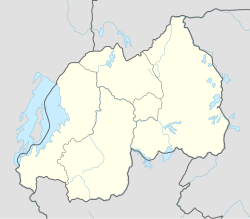 Memorial centre sculpture | |
| Established | 1 June 1994 (centre) |
|---|---|
| Coordinates | 2°10′44″S29°20′17″E / 2.179°S 29.338°E |
| Type | Genocide museum |
| Part of | Memorial sites of the 1994 Genocide against the Tutsi in Rwanda |
| Criteria | Cultural: vi |
| Reference | 1586-004 |
| Inscription | 2023 (45th Session) |
| Coordinates | 2°11′31″S29°20′29″E / 2.192011°S 29.341274°E |
The Bisesero Genocide Memorial is a national memorial in Rwanda which commemorates the 1994 Genocide against the Tutsi in Rwanda. 40,000 people were killed where the memorial now stands. [1]

